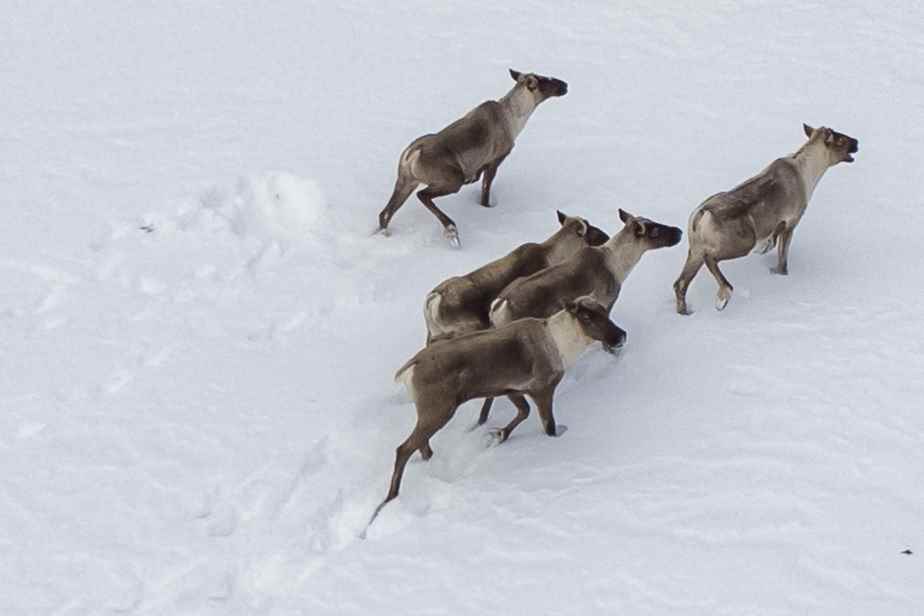Posted at 5:00 a.m.
The need for an “ambitious” global agreement
the Living Planet Report (Living Planet Report) released on Thursday paints a grim picture of the state of the planet’s most endangered wildlife species. According to the latest data, populations of vertebrate species monitored by WWF have declined by an average of 69% between 1970 and 2018. The report shows large disparities between the North and the South, where the decline in biodiversity is much more pronounced. The organization calls on world governments to adopt “an ambitious global agreement to save wildlife” during the next global biodiversity summit, COP15, to be held in Montreal in December.
Various causes, a common denominator
This decline is attributed to five main causes, which have a common denominator: human activities. The destruction of natural habitats, particularly for agriculture, ranks first, followed by the overexploitation of many species, climate change, pollution and the arrival of invasive species. As far as climate change is concerned, it is to be expected that the consequences on biodiversity will be greater in the coming decades, as their effects become more pronounced in several regions of the world. If the southern hemisphere is more affected by a strong decline in the populations of wild species, the ecological footprint of its populations is much smaller than that of the northern populations, recalls the report. In this respect, North America is the worst performer in the world.
The case of sharks
Over the past 50 years, 18 of 31 species of oceanic sharks and rays have lost 71% of their populations. The oceanic whitetip shark alone has lost 95% of its population and is now considered critically endangered, according to the International Union for Conservation of Nature. A global assessment that could upset marine ecosystems where sharks play an important role in the food chain. The report also states that the populations of 1,398 species of freshwater animals have declined by an average of 83% between 1970 and 2018.
An exercise criticized
“This is a report that is highly contested by scientists. It has all sorts of flaws,” points out Dominique Gravel, professor of biology at the University of Sherbrooke and holder of the Canada Research Chair in Integrative Ecology. The WWF does not inventory all the animal populations on the planet, but rather focuses on 5,230 species of vertebrates distributed in nearly 32,000 different populations. The environmental organization focuses mainly on the most endangered species, recalls Mr. Gravel. “It’s hard to find simple numbers [à présenter] in terms of biodiversity. Despite its shortcomings, the Living Planet Index has become a benchmark,” says Mr. Gravel. What should be avoided, according to him, is to present the report for what it is not: a complete portrait of the state of biodiversity on a planetary scale.
Insufficient effort
A study published in 2020 in the journal Nature had harshly criticized the WWF’s work with its Living Planet Index (Living Planet Index, in English). Examining 14,000 populations of vertebrates monitored since 1970, the authors concluded that only 1% of these populations were in extreme decline and that if they were removed from the equation, all of the remaining populations showed no tendency to decline. up or down. This study had also received its share of criticism, notes Dominique Gravel. He believes that the work of the WWF nevertheless allows us to conclude that “our modest conservation efforts have not worked to date”.
Investigate the causes of decline
“There is no perfect indicator,” argues Alain Branchaud, biologist and general manager of the Society for Nature and Parks in Quebec. According to him, the WWF index still makes it possible to show trends since it has been accumulating data since 1970. “Faced with the two major crises of biodiversity and climate change, it shows us the importance of taking advantage of this ally that is nature. The important thing, he believes, is to focus now on the causes of this decline. “We have public policies and an economic model that are based on continuous growth. It takes a discussion. We must open the dialogue. If we don’t tackle that, the systemic changes in our societies, we won’t succeed. »
Learn more
-
- 16%
- The latest report from the World Wide Fund for Nature covers 16% of known bird species, 11% of mammal species, 6% of fish species and 3% of amphibian and reptile species.
Source: Our World in Data
- 69%
- In 2000, the populations of the most threatened wildlife had declined by an average of 53%. This figure rose to 69% in 2018.
Source: World Wildlife Fund

